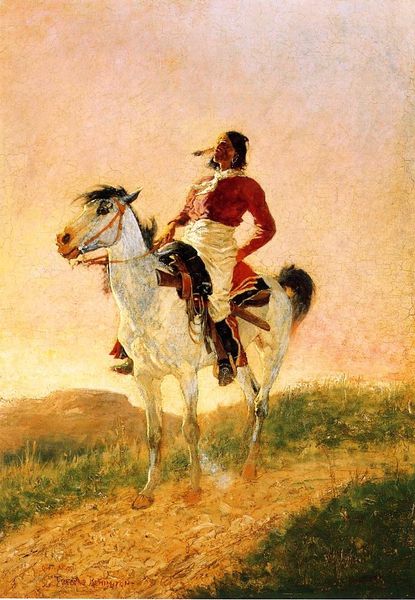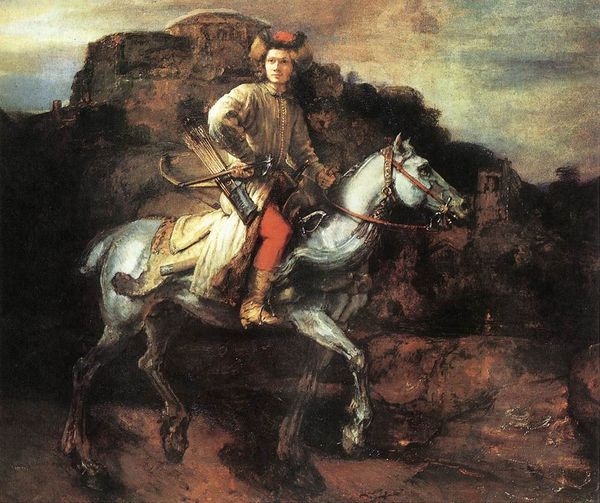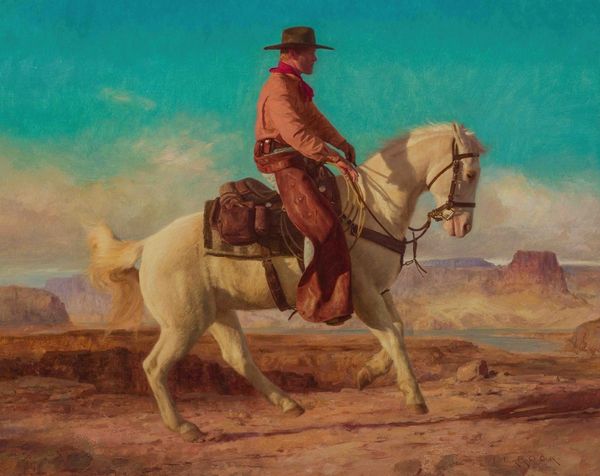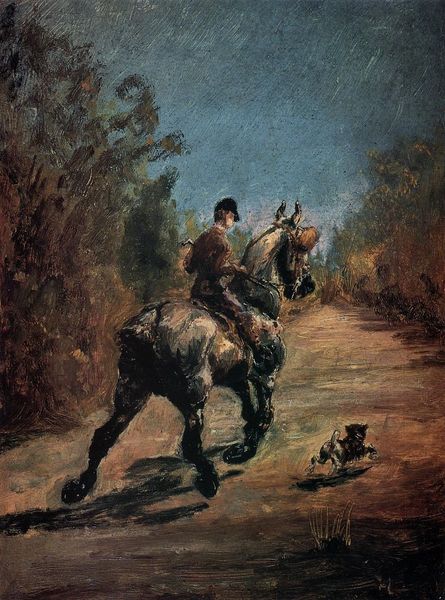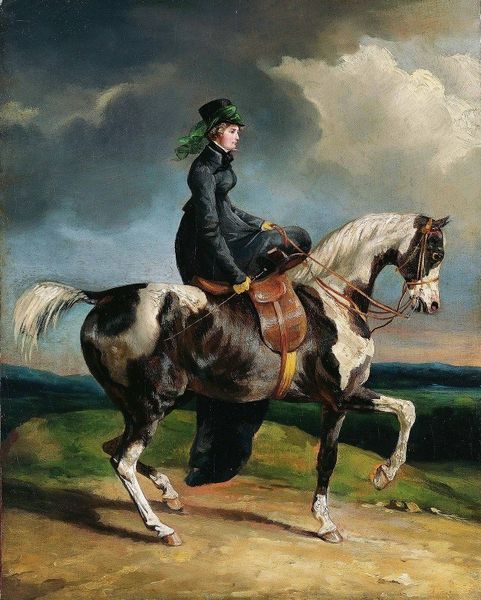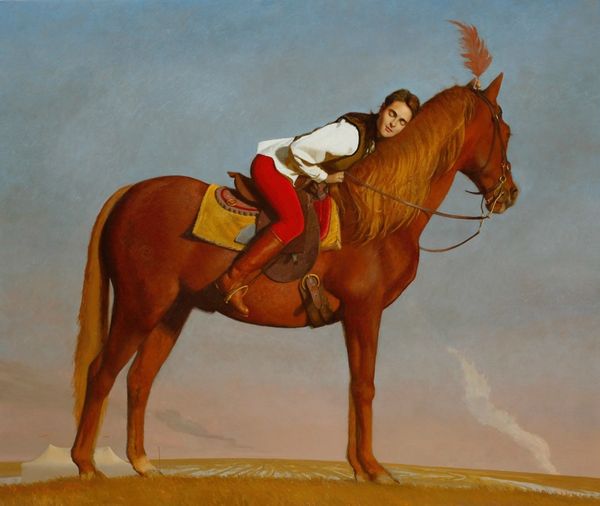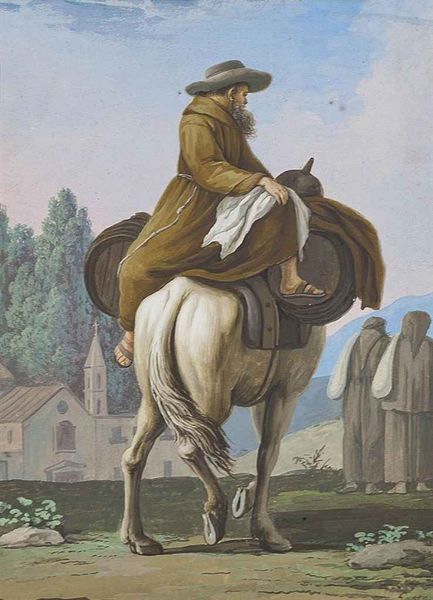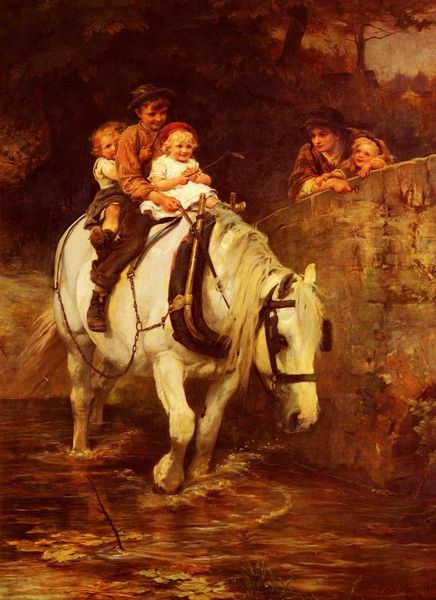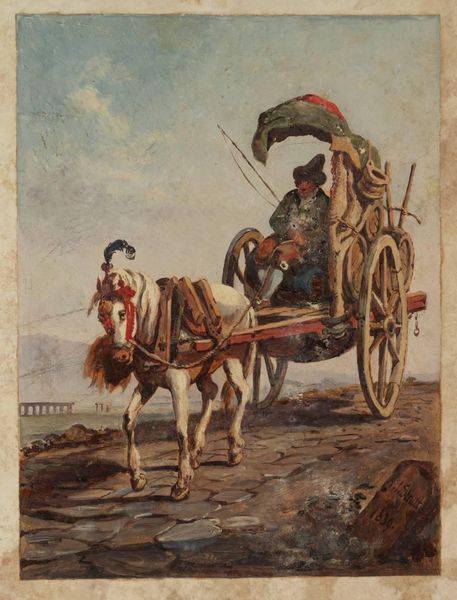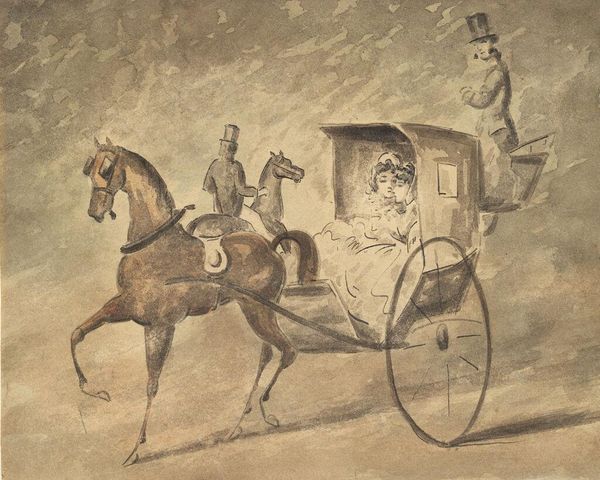
Copyright: Public domain
Curator: This delightful artwork is "A Boy on a Donkey," painted in 1855 by Fyodor Bronnikov. Editor: It’s striking, isn’t it? The painting gives off a sense of serene, almost laborious, stillness. The textures seem really pronounced; the roughness of the donkey's coat, the weight of that wooden bucket strapped to his back. Curator: Bronnikov, despite not being a household name today, played a crucial role in the Russian academic art scene. His genre paintings, often depicting everyday life, tapped into a growing social realism that was becoming popular. Consider the context, where art was transitioning from strictly religious and historical themes toward images of contemporary life, offering a perspective that valued the common person. Editor: That emphasis on the "common person" comes through powerfully in the way the painting showcases the connection between child labor and agriculture. Notice the bucket and worn rope, likely implying the boy's work to collect water. And the visible brushstrokes almost elevate the toil into something poetic, or at least visible, refusing to hide the raw materiality behind idealized forms. Curator: Indeed. The romantic style employed also subtly infuses the mundane with a hint of charm, somewhat masking the potential hardship, of the scene, and perhaps appealing to an emerging middle-class market eager for representations of rural innocence. It speaks volumes about the market forces at play even then and how genre painting provided commentary— sometimes idealized and sometimes critical. Editor: And even that hat feels meaningful—like it was repurposed from somewhere else. Not a romantic touch, necessarily, but it reminds us that the subjects used material to its maximum potential, altering it. It also suggests an off-screen parent or guardian working out of shot. All this talk of labor of the scene has now captured my interest as the focus, instead of being a casual painting of rustic childhood it seems. Curator: Precisely, and through such paintings we glean insight into the socio-political currents shaping art's direction in that era. Bronnikov’s piece is now less a standalone image and more an artifact shaped by cultural hands, political pressure, and available technologies that affected not just creation but viewership of art. Editor: Looking closer now, I'm starting to think the whole meaning might stem from this relationship between work and nature! What I mean by this is that our labor shapes even so-called natural experiences. It feels deeply ecological in that way and really moves us beyond assumptions on historical narrative to broader implications now for culture-environment relations today! Curator: Absolutely, and I hope that our discussion has encouraged deeper thinking on how social themes from the past impact, and have shaped the present. Editor: Likewise! It also helped me better notice how humble the painting seems through subject and material means.
Comments
No comments
Be the first to comment and join the conversation on the ultimate creative platform.


